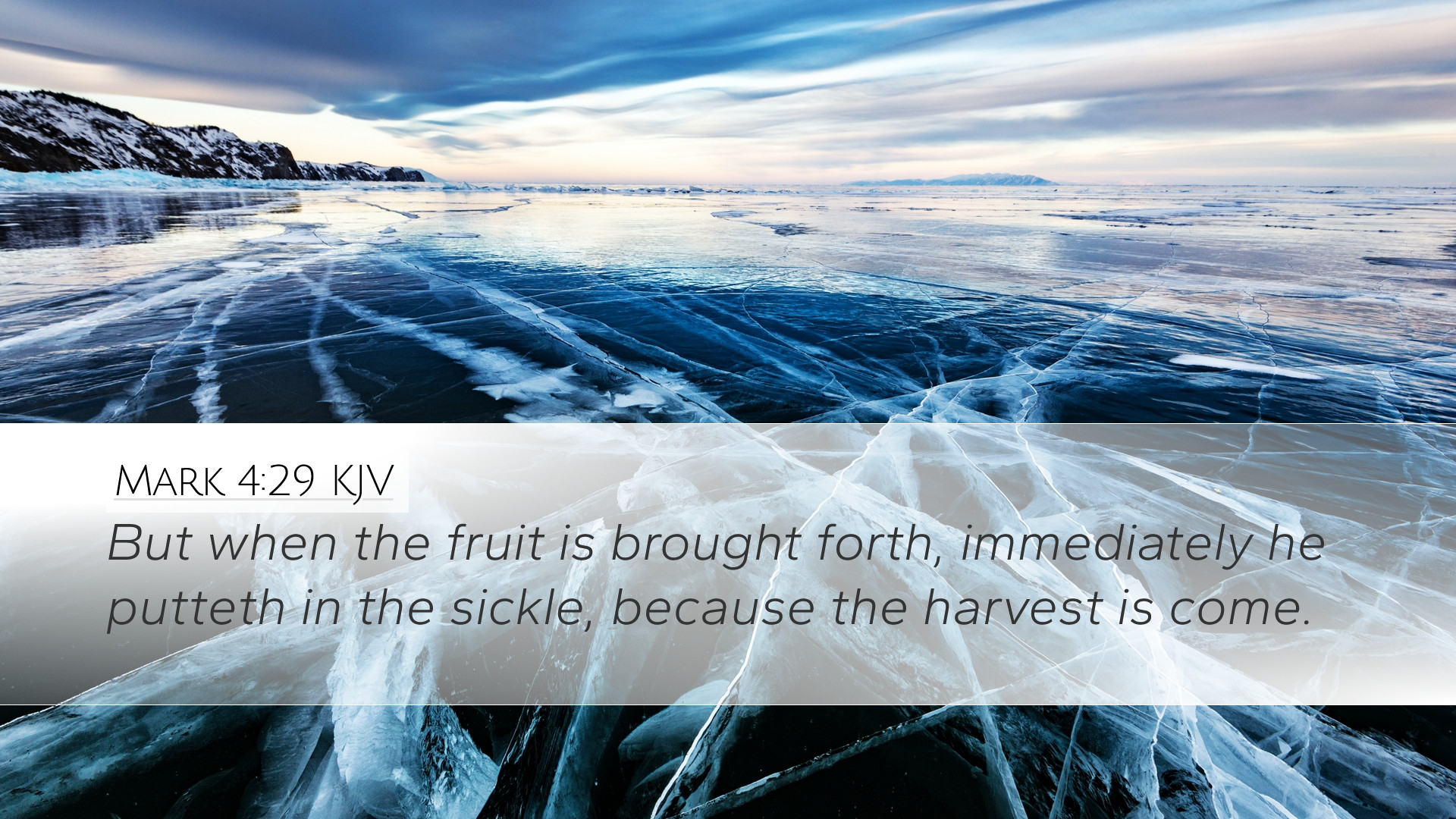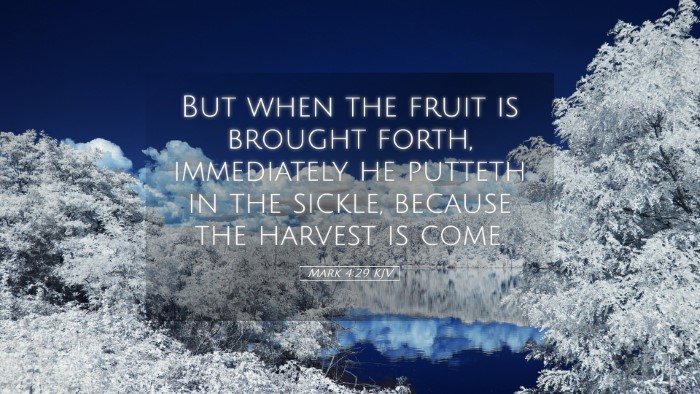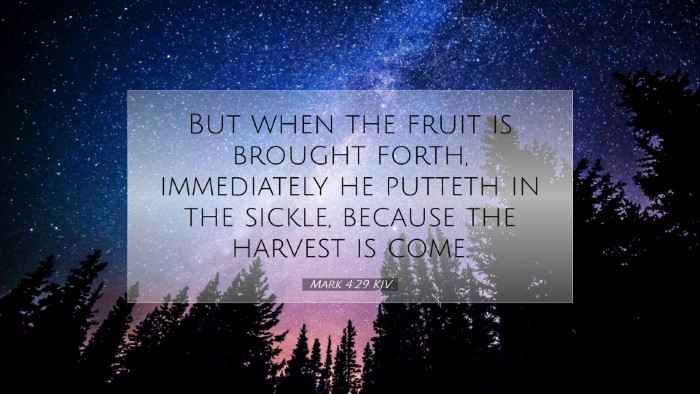Introduction to the Passage
Mark 4:29 is situated within the context of Jesus' teaching on the Kingdom of God, using agricultural imagery to elucidate the process of spiritual growth and divine timing.
This verse follows the parable of the seed growing secretly, illustrating the natural yet mysterious process of spiritual maturation.
Insights from Public Domain Commentaries
Matthew Henry’s Commentary
Matthew Henry emphasizes the providence of God in the gradual growth of the seed. He notes that while the farmer sows the seed, it is God who gives the increase, highlighting the necessity of divine power in producing spiritual fruit.
Henry elaborates on the significance of timing in this verse: "as the harvest is at the appointed season, so is the gathering of the fruits of the Spirit."
He encourages readers to reflect on the nature of the harvest, reminding them that spiritual growth may not always be immediately visible but is nonetheless inevitable under God's sovereign care.
Henry likens this to the believer’s life, which, although often hidden, is nurtured by the Holy Spirit until the time of fruition.
Albert Barnes’ Notes on the Bible
Albert Barnes focuses on the metaphor of the harvest in Mark 4:29. He explains that the "fruit" symbolizes the outcomes of one's faith and labor, illustrating that there is a season for every purpose under heaven.
Barnes notes that the phrasing "immediately he putteth in the sickle" signifies the urgency and readiness of the harvest, a reminder that believers must be vigilant in their spiritual endeavors.
Furthermore, Barnes points to the importance of patience in the Christian life, as the growth of faith often occurs through unseen processes, ultimately leading to a fruitful harvest in God's timing.
He implores Christians to remain dedicated and encouraged, for the harvest will come, just as the seed must first be sown and nurtured.
Adam Clarke’s Commentary
Adam Clarke offers a detailed analysis of the agricultural techniques referenced in the passage, noting the significance of using a sickle during harvest time.
He interprets the "sickle" as an instrument of separation—marking the end of one season and the beginning of another, thus highlighting the shift from the process of planting and growing to that of harvesting.
Clarke emphasizes that the fruit represents the visible manifestations of faith—a direct result of one's spiritual journey. He argues that this indicates God's faithfulness to His people and His commitment to bringing their efforts to fruition.
He expresses that the phrase "the harvest is come" conveys a powerful truth: that God has designated a specific time for the fruition of faith, and this should inspire hope and readiness among believers.
Theological Implications
The verse encapsulates several theological truths, including God's sovereignty in the growth process and the certainty of spiritual fruitfulness for those who remain faithful.
The imagery of the harvest bears significant eschatological implications, calling believers to live in anticipation of the ultimate harvest at the end of the age.
The relationship between sowing, growth, and harvesting serves as a metaphor for the Christian life, where patience, faith, and diligence are paramount.
Furthermore, it emphasizes the essential role of the Church in proclaiming the Gospel—sowing seeds of faith that will eventually yield a rich harvest for the Kingdom of God.
Conclusion
Mark 4:29 encapsulates profound truths regarding the dynamics of spiritual growth and the harvest of faith. Through the lens of agricultural metaphor, readers gain insight into God's unwavering faithfulness to bring forth fruit in both individual lives and the broader Church.
As scholars, students, and pastors reflect upon this verse, they are encouraged to embrace the rhythms of sowing, nurturing, and harvesting in their own lives, reaffirming their commitment to fostering a vibrant faith that reflects the Kingdom of God.


